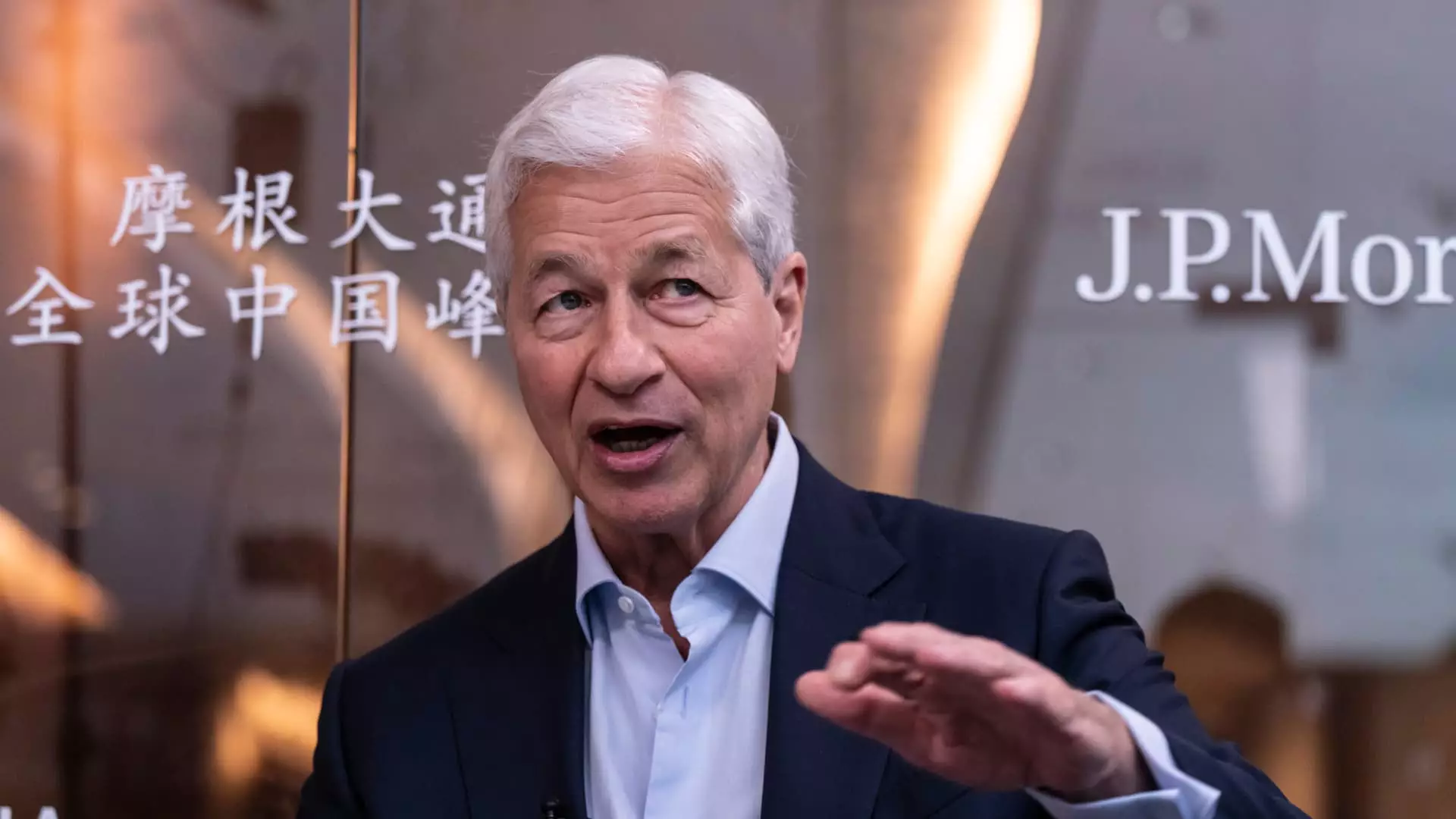In the rapidly evolving landscape of online investing, traditional banks are now finding themselves at a crossroads. Long seen as the stodgy giants of finance, firms like JPMorgan Chase are taking significant steps to modernize and compete against nimble online brokerages. They are now declaring their intentions not just to participate in the investing arena, but to lead it. With JPMorgan Chase unveiling new tools for bond and CD purchases via its mobile app, the ambitions are high, but so are the stakes.
A Transformative Vision for Client Experience
JPMorgan is pivoting to create a robust digital experience that caters specifically to the needs of today’s investors. By offering custom screens and yield comparisons for bonds within a familiar platform, the bank aims to simplify investing for both novice and experienced clients. According to Paul Vienick, the bank’s head of online investing, the philosophy behind these updates is clear: to replicate the user-friendly experience of stock and ETF trading in the realm of fixed income.
The underlying message is as important as the medium: JPMorgan wants clients to find engagement and ease within their app, making investment decisions less burdensome and more intuitive. While the bank has made commendable strides, the question remains—can they transform a legacy institution into a dynamic online powerhouse?
Playing Catch-Up in a Crowded Market
Despite being the largest bank in the U.S., JPMorgan’s online efforts have lagged significantly behind those of established online brokers like Charles Schwab, Fidelity, and E-Trade. With only recently crossing the threshold of $100 billion in assets under management, JPMorgan is, by all accounts, a minor player in the online investment space. The stark contrast is undeniable: while these rivals have had decades to cultivate their platforms and investor base, JPMorgan’s attempts to engage self-directed investors appear prospectively exhausting.
The bank’s journey into online investing has not been without its hiccups. Initial attempts like the “You Invest” platform proved to be a missed opportunity, a fact acknowledged by CEO Jamie Dimon. Frustrated by the lack of traction, Dimon’s candid assessments highlight a corporate introspection that seems crucial for future success.
Leadership That Drives Change
Part of the renewed strategy involved hiring industry veteran Paul Vienick from TD Ameritrade, bringing fresh energy and insights to the challenge of reshaping JPMorgan’s online investing narrative. His recognition that JPMorgan needs to enhance its digital service delivery reflects a broader industry trend that underscores the need to remain competitive in an increasingly digital financial environment.
Why does this matter? Because the financial landscape is undergoing transformative change, and engaging with tech-savvy consumers is no longer an optional endeavor; it’s a necessity. If JPMorgan fails to catch this wave, it risks being left behind far more dramatically than it might have a decade ago.
Branching Out While Simplifying
Interestingly, while JPMorgan aims to bolster its online offerings, it is not entirely foregoing traditional services. Their well-established branch network stands as a counterbalance to the digital-only platforms that other firms champion. With over 19 million affluent customers in the U.S., the bank is sitting on a goldmine of potential assets yet to be invested, particularly when it comes to self-directed investments.
By combining physical presence with robust digital tools, JPMorgan sets itself apart. This model could provide clients a cohesive experience — whether they prefer face-to-face conversations with advisors or autonomous investment management through apps.
Targeting the Evolving Investor
New market dynamics are emerging as clients grow more engaged in their investing habits. These individuals—those who regularly buy and sell stocks—are crucial for JPMorgan’s strategy. Offering incentives like cash bonuses for transfers to their self-directed platform is a smart play to attract users who want a comprehensive view of their finances and ease in managing their assets.
With plans to introduce after-hours trading soon, the bank is demonstrating its intent to cater to these more active investors. The objective? Turn casual clients into committed customers who see JPMorgan as their one-stop shop for banking and investing.
Trust and Reputation as Competitive Edges
JPMorgan’s vast resources and trusted reputation under Dimon’s leadership are strong assets in this competitive landscape. An array of financial products combined with a keen understanding of customer needs will certainly forge strong client relationships. Vienick’s confidence in the potential for the self-directed business to become a trillion-dollar venture underscores the serious intentions behind these developments.
For JPMorgan Chase, the future demands not just adaptation but also a proactive, strategic shift in how they engage with investors. The path forward is fraught with challenges, yet with the right moves—effectively marrying technology with a personalized approach—the bank could very well redefine how consumers perceive banking and investing, ensuring their place in a market dominated by digital innovation.

